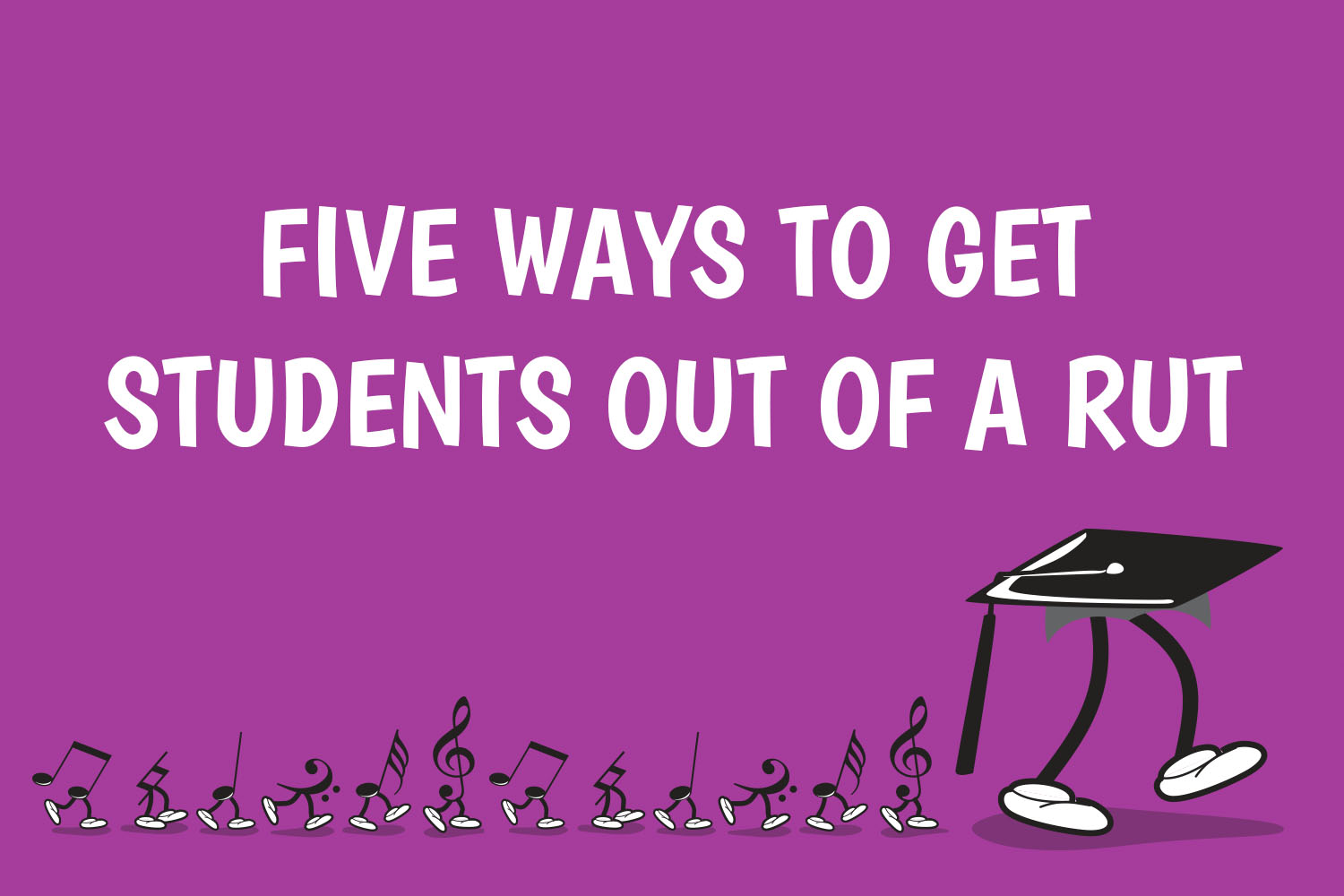Five Ways to Get Students Out of a Rut

2020 EDIT: The motivational peaks and troughs I refer to in this post are a normal part of all music education, but are rather intensified in the context of a global pandemic. In the midst of makeshift home-schooling, stay-at-home mandates and shelter in place orders, the five suggestions below will hopefully go some way towards helping your students out of their COVID-induced rut.
**********
Every student, from time to time, goes into a bit of a practice rut. It’s the nature of any long-term pursuit: there are peaks and troughs of enthusiasm.
The danger is when the troughs manifest themselves into the ‘I don’t want to play piano anymore’ mentality, or worse, when the parent starts saying ‘well there’s no practice going on so they’ve obviously lost interest’. What can we do to avoid this?
Here are five novel practice strategies to get students out of a rut, work through that trough, and get back to a peak of enthusiasm!
1. One-Week Wonder
Assign a repertoire piece to be completed in one week only. Absolutely no extra time allowed. Not only that, students should keep a log of exactly how much time has been spent on the piece. This creates a huge novelty factor, and it doesn’t matter if they spend their entire practice time on that piece.
What level of piece should this be? In my opinion, it should be at least 2-3 grades lower than the standard of piece they are currently playing. Almost-sight-readable type pieces, but which can sound fantastic in one week, with all the bells and whistles.
EDIT: At the time of writing this post, I wasn’t using my own Rote Repertoire pieces nearly as much as I do now. For me, these are the very best one-week wonders, and they are in fact one-lesson wonders! They inspire creative exercises during the week as well as improving sight reading skills on an exponential scale. You can check out the entire repertoire range here.
2. Single Key Boot Camp
Technical work can be a drag… or it can be a fabulous way of creating a new practice routine. Pick a key, any key (using the Decide Now app for this is really fun!). That’s it for the week: now it’s time to play everything you can think of in that key, and in all sort of ways:
- Major, minor (3 kinds!), chromatic scales: similar, contrary, Russian (Try playing scales with one finger only, or descending first. This is HARD!)
- Arpeggios
- Chord progressions
- Everything listed above using all sorts of different rhythms and accents
3. Review a Repertoire Book
Asking students to ‘review’ a book is, essentially, code for ‘please practice your sight-reading all week’. If you’re like me and have a huge library of piano books, some of which I’ve never really looked at properly, it’s a novel idea to ask your student to review one of the books for you. I say things like ‘Just let me know who you think these pieces will appeal to’ and ‘See if you think this book would be suitable for 5-7-year olds’. It works a treat and their sight reading improves as a result!
4. Limit Practice Time
Yes, limit practice. Although this may seem counter-intuitive (really? Ask a student to practice less?), I have seen this work really well. Sometimes, being told you’re only allowed to practice for a certain (short) amount of time means that the practice actually gets done, rather than avoided completely… and many times the short time allocated is accidentally exceeded.
Limiting can mean limiting the amount OR type of practice. For example:
- No more than 10 minutes at any one sitting
- Practice must consist of 8 minutes’ playing followed by 5 minutes’ listening
- Only practice 8 bars of each piece
5. Duets
Ensemble playing is the essence of fun music making, and piano duets are the most accessible for students having private piano lessons. Assigning a duet as an actual repertoire piece results in some very enthusiastic playing when it all comes together. A few tips for duets:
- Students should move their piano stool to the right or left when practising at home, depending on which part they are playing. No point in leaning over the whole time while practising alone!
- Duets can also be ‘one-week wonders’ (see above)
- It’s a good idea to get students playing duets that are a little below their solo playing level. This allows brain space for concentrating on ensemble skills.
- There are a multitude of duet books on the market in every genre. For classical, I enjoy the Masterworks series, and for jazz styles, I love the variety of duets by Christopher Norton and Martha Mier.
EDIT: Ensemble playing is now much harder due to COVID-19 and the limitations of online teaching. One way to get around this, if your students have digital pianos, is with the amazing program Internet Midi. Or, as I have done, we can send recordings of one part for our students to play along with. Another option is to check out the duet packs in the Rote Repertoire series, because the parts are simple enough to teach to family members!
I hope that any or all of the five strategies above will help, if your students are in a practice rut. Would love to hear how it goes!
